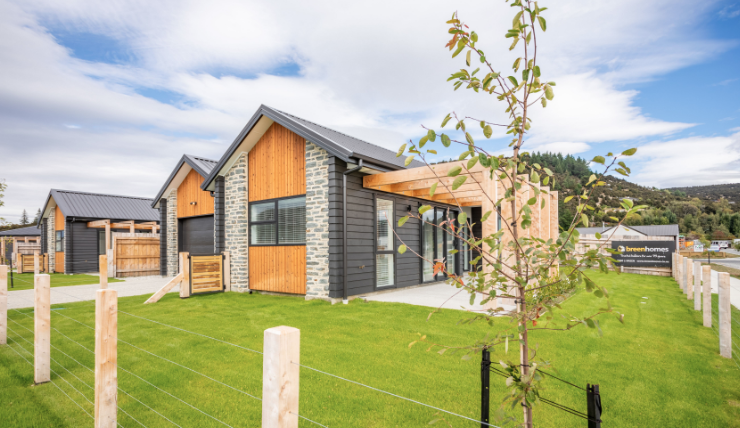Mixed support for inclusionary zoning from housing trust
Diana Cocks
28 September 2022, 4:06 PM
 The development of rural land like this off Orchard Road will be subject to affordable housing contributions under the proposed inclusionary zoning plan change. PHOTO: Wānaka App
The development of rural land like this off Orchard Road will be subject to affordable housing contributions under the proposed inclusionary zoning plan change. PHOTO: Wānaka AppThe direct beneficiary of the council’s proposed inclusionary zoning (IZ) plan change has revealed plans to submit against part of the proposal.
In a statement last week, Queenstown Lakes Community Housing Trust (QLCHT) confirmed it supported in principle most, but not all, of the Queenstown Lakes District Council’s (QLDC) proposed IZ plan change.
The new IZ provisions will be expanded to require almost all landowners developing residential lots (not just major developers) to make a contribution of cash or land in accordance with pre-set calculations to meet the council’s affordable housing policy.
Subdivisions which already have a pre-existing agreement to contribute to community housing, such as Northlake, Longview, Hikuwai, Riverside Park, Peninsula Bay and Allenby Farms, are exempt from the proposed IZ provisions.
For years, QLCHT has benefitted from land gifted in negotiated settlements with major developers but as there were no rules regarding these contributions in the District Plan the negotiations were ad-hoc.

One of six occupied homes completed in the Hikuwai subdivision in Wānaka last April - a QLCHT project. PHOTO: QLCHT
QLCHT chair Richard Thomas said the trust supports the key principles of this proposal as it will make contributions to affordable housing a formal requirement under the District Plan.
The principles have always been about capturing the increase in land’s value when it’s rezoned (typically from rural to residential) on behalf of the community for the purposes of affordable housing in the district.
“We fully support these rules for subdivisions of larger developments, as has been happening on the ground here since 2003,” Richard said.
“However, it is QLCHT’s belief that what council has proposed is too wide in scope, and requires some refinement.”
The trust is planning to submit against the inclusion of existing serviced lots (land already zoned residential and connected to services) and the ‘top-up’ provision (where a new house being built on a vacant lot in a subdivision which has already paid an affordable housing contribution might be required to pay an additional sum depending on how much was contributed at the subdivision stage).
“We consider the latter has gone beyond the original intentions of the policy, and we would like to see it more aligned with the agreements provided to date,” Richard said.
QLCHT executive officer Julie Scott said the trust understood the original intentions of the proposed new policy would reflect the current process but the trust was not privy to the council’s “internal policy drafting processes” so was unaware of the proposal’s finer details until recently.
And if the proposed IZ plan change was amended to remove the top up rule and contributions from single landowners “we still expect to be able to achieve our goal of 1,000 homes by 2038”, she said.
The adoption of inclusionary housing in the District Plan will go a long way towards securing enough land to reduce the nearly 800 households needing a home on the trust’s waiting list.
The value received from IZ contributions (land or cash) is invested into QLCHT’s ‘Secure Home’ scheme or one of its affordable rental programmes. These properties form a housing stock which is held for the Queenstown Lakes District community in perpetuity.
QLCHT has built and delivered a total of eight housing developments (119 homes) which, together with other houses purchased, has helped 244 local households into homes throughout the district. Further housing developments (totalling over 100 homes) are underway at Northlake, Lake Hāwea and Arrowtown.
“Since the first stakeholder deed was signed between council and a developer in 2003, this planning tool has resulted in QLCHT receiving around $25M in land and cash contributions from large-scale developers over the past 15 years,” Richard said.
“In turn, this has enabled the trust to assist hundreds of locals into homes to call their own.”
QLCHT will be lodging and publicly sharing its own submission on the proposed IZ provisions when QLDC’s public consultation process starts on October 13.





